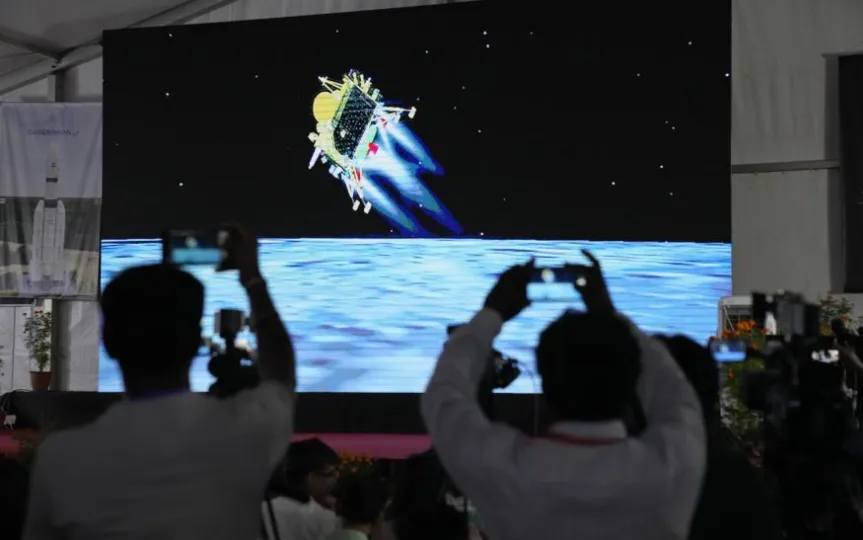India Successfully Lands at Moon’s South Pole
India has achieved a significant milestone in space exploration as its Chandryaan-3 spacecraft’s Vikram lander successfully landed on the Moon. This achievement not only marks India’s first successful lunar landing but also makes it the fourth country, after the Soviet Union, US, and China, to accomplish this feat. What sets India’s achievement apart is that it is the first country to land near the Moon’s south pole, a challenging task due to the rugged landscape, but crucial for potential discoveries of water ice. Previous missions from other nations have only landed near the equator.
The landing comes four years after Chandryaan-2’s Vikram lander actually fell. The Indian Space Research Organization (ISRO) planned the follow-up with a “fault-based design” that includes more back-up systems, a wider landing area and software upgrades.
HISTORY HAS BEEN MADE#Chandrayaan3‘s successful landing means that India is now the 4th country to soft-land a spacecraft on the Moon, and we are now the ONLY country to land successfully near the south pole of the Moon! 🇮🇳🌖 #ISRO pic.twitter.com/1D8Bdo4r8F
— ISRO Spaceflight (@ISROSpaceflight) August 23, 2023
Vikram remains idle for hours to allow the moon dust to settle. Once the area is clear, the Pragyaan rover takes pictures and collects scientific data. The lander and the rover have a total of five devices, which are intended to measure the properties of the Moon’s atmosphere, surface and tectonic activity. ISRO timed the landing at the beginning of a lunar day (about 28 Earth days) to maximize the amount of solar energy available to Vikram and Pragyaan.
The success of Chandryaan-3 is a matter of national pride for India. The country has wanted to become a spaceflight superpower and hopes to launch a space station around 2030. It can now claim to be one of the few countries to have ever reached the extraterrestrial surface. The data collected near the pole could also be important for future missions to the Moon by India and other countries, which could use any ice they find as fuel, oxygen and water.
The landing also puts India ahead of other countries competing to land on the moon, if not always for the first time. Russia’s Luna-25 spacecraft touched down just two days earlier, and Israel expects a follow-up to its Beresheet lander in 2024. The United Arab Emirates also wants to land by 2024. The United States, on the other hand, hopes to return humans to the moon. Artemis 3 mission in late 2025. These also do not include commercial efforts. Interest in Earth’s nearest cosmic neighbor is on the rise again, and India is now part of this vanguard.




